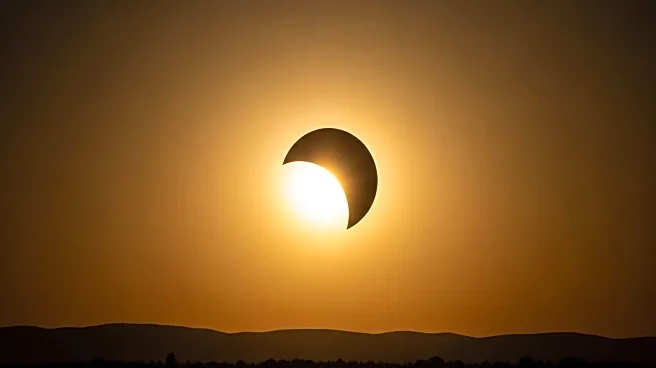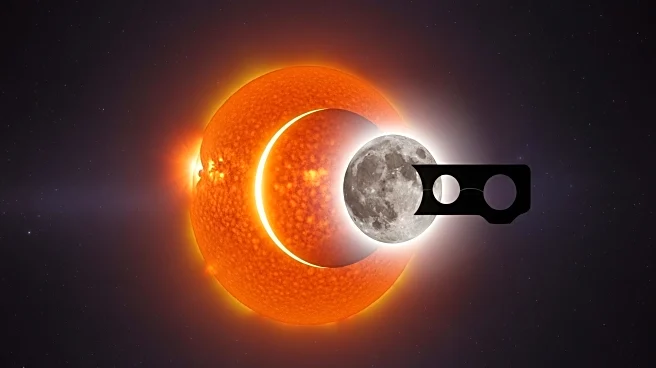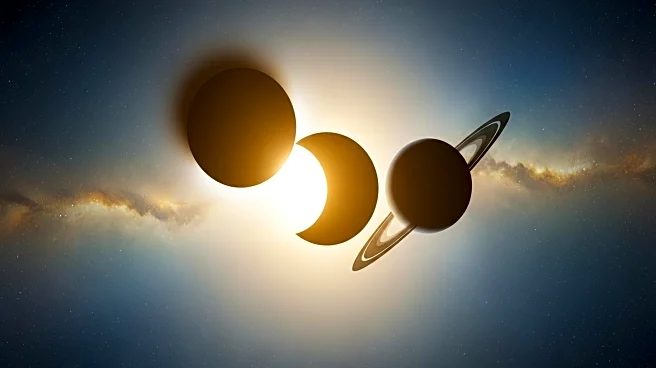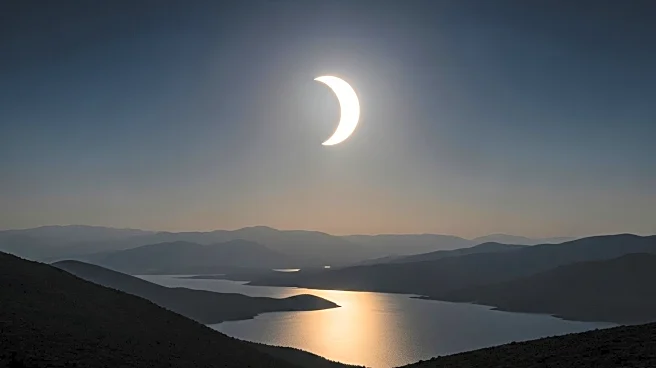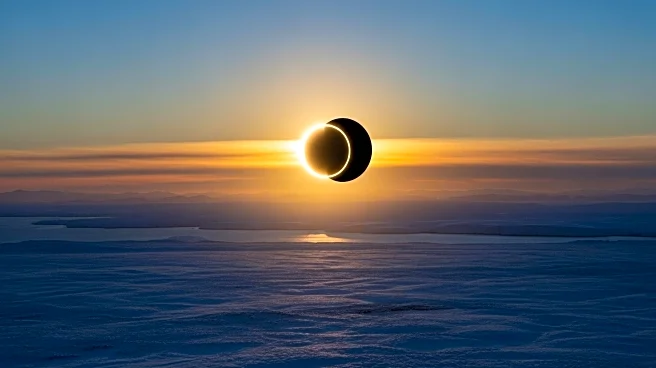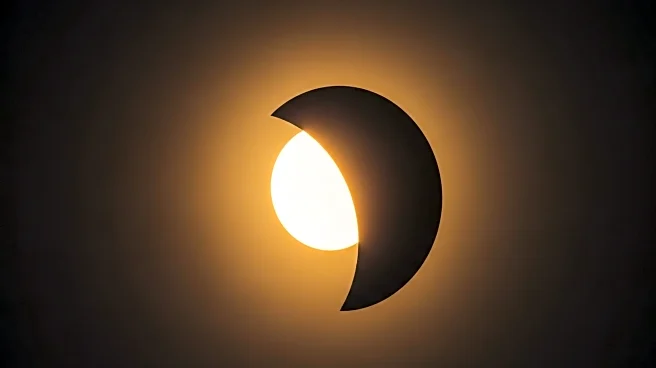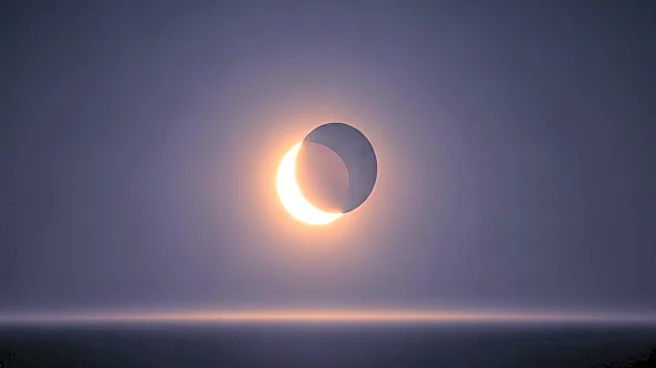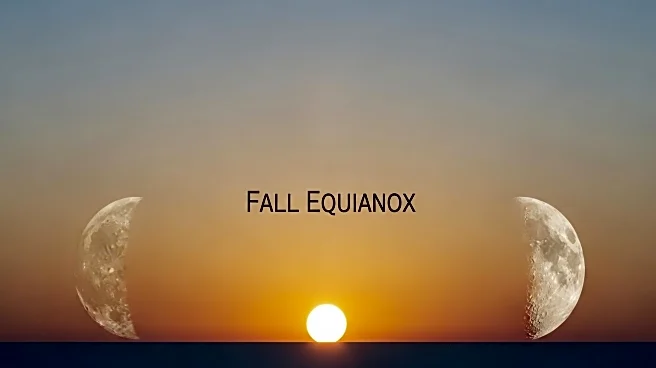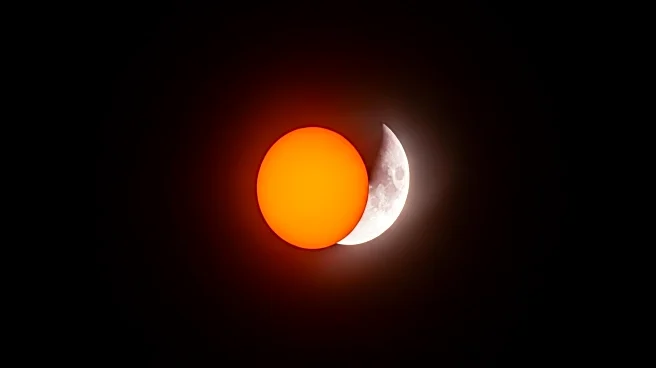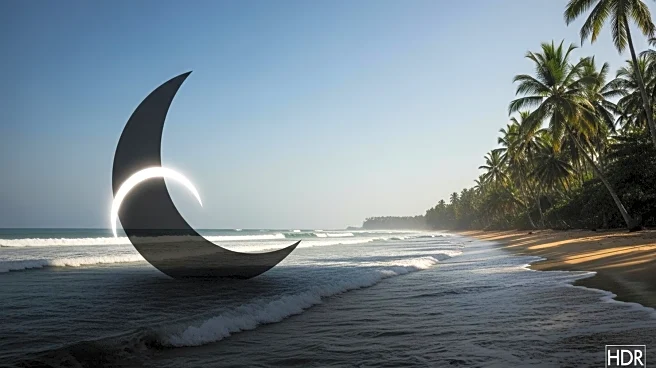What's Happening?
A partial solar eclipse is taking place today, September 21, 2025, visible primarily in regions such as New Zealand, Antarctica, and the South Pacific islands. The eclipse begins at 1:29 p.m. EDT and reaches its maximum coverage at 3:41 p.m. EDT, with the moon covering up to 86% of the sun in some areas. This celestial event occurs when the new moon passes between Earth and the sun, partially obscuring the solar disk. The eclipse is notable for its timing just before the equinox, marking a seasonal change in both hemispheres. Observers are advised to use certified solar eclipse glasses or solar filters to safely view the event, as direct viewing can cause permanent eye damage. For those outside the visibility zone, a livestream is available, featuring real-time images and expert commentary.
Why It's Important?
The partial solar eclipse is significant for skywatchers and astronomers, offering a rare opportunity to observe the moon's interaction with the sun. This event highlights the importance of celestial phenomena in understanding Earth's position in the solar system and the mechanics of eclipses. It also serves as a reminder of the need for proper safety measures when viewing solar events, emphasizing the role of scientific organizations in educating the public. The eclipse's occurrence near the equinox adds to its uniqueness, providing insights into seasonal transitions and their impact on global weather patterns.
What's Next?
The next solar eclipse will be an annular eclipse on February 17, 2026, primarily visible from Antarctica. This upcoming event will feature the 'ring of fire' phase, where the moon covers the center of the sun, leaving a visible ring. Observers in the Southern Hemisphere will have another chance to witness a significant solar event, with preparations already underway for safe viewing and scientific study. The September 21 eclipse marks the last solar event of 2025, setting the stage for future astronomical observations and public engagement.

